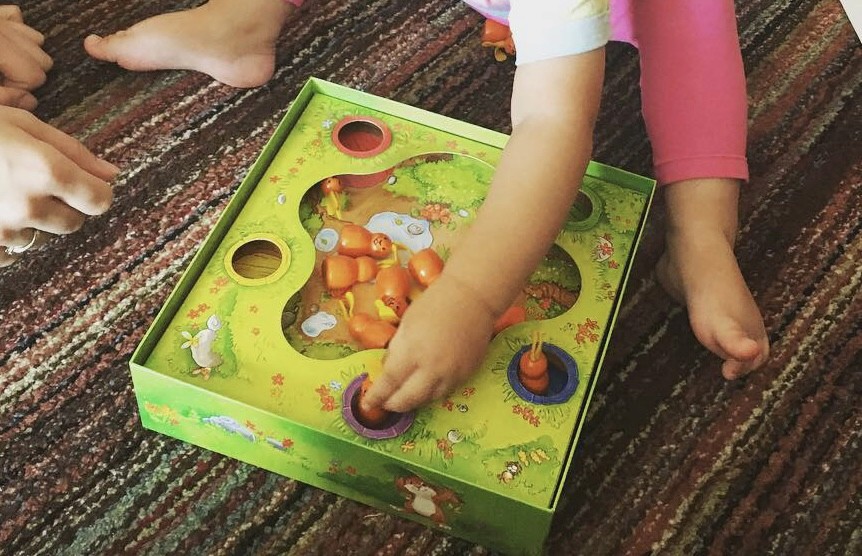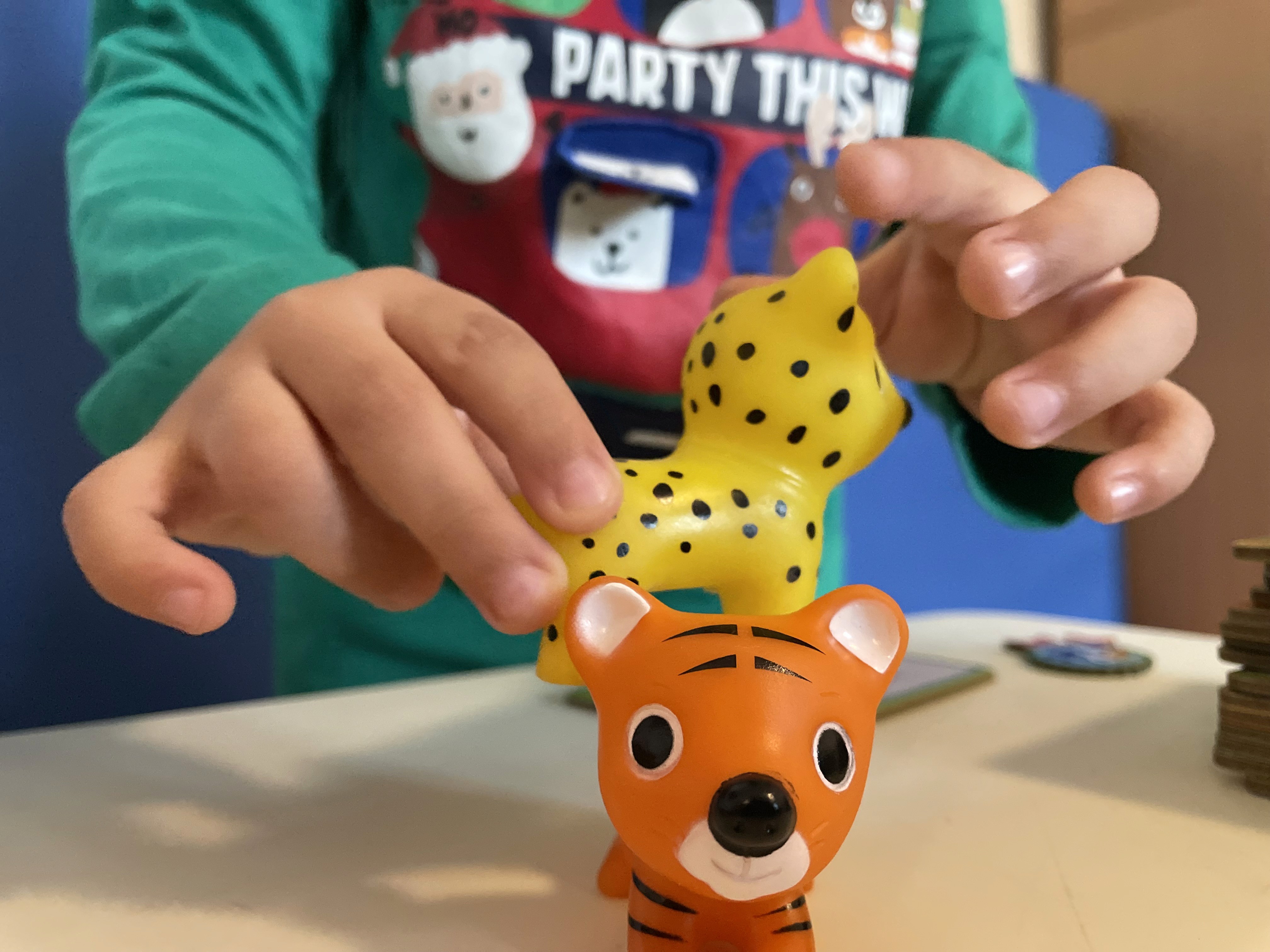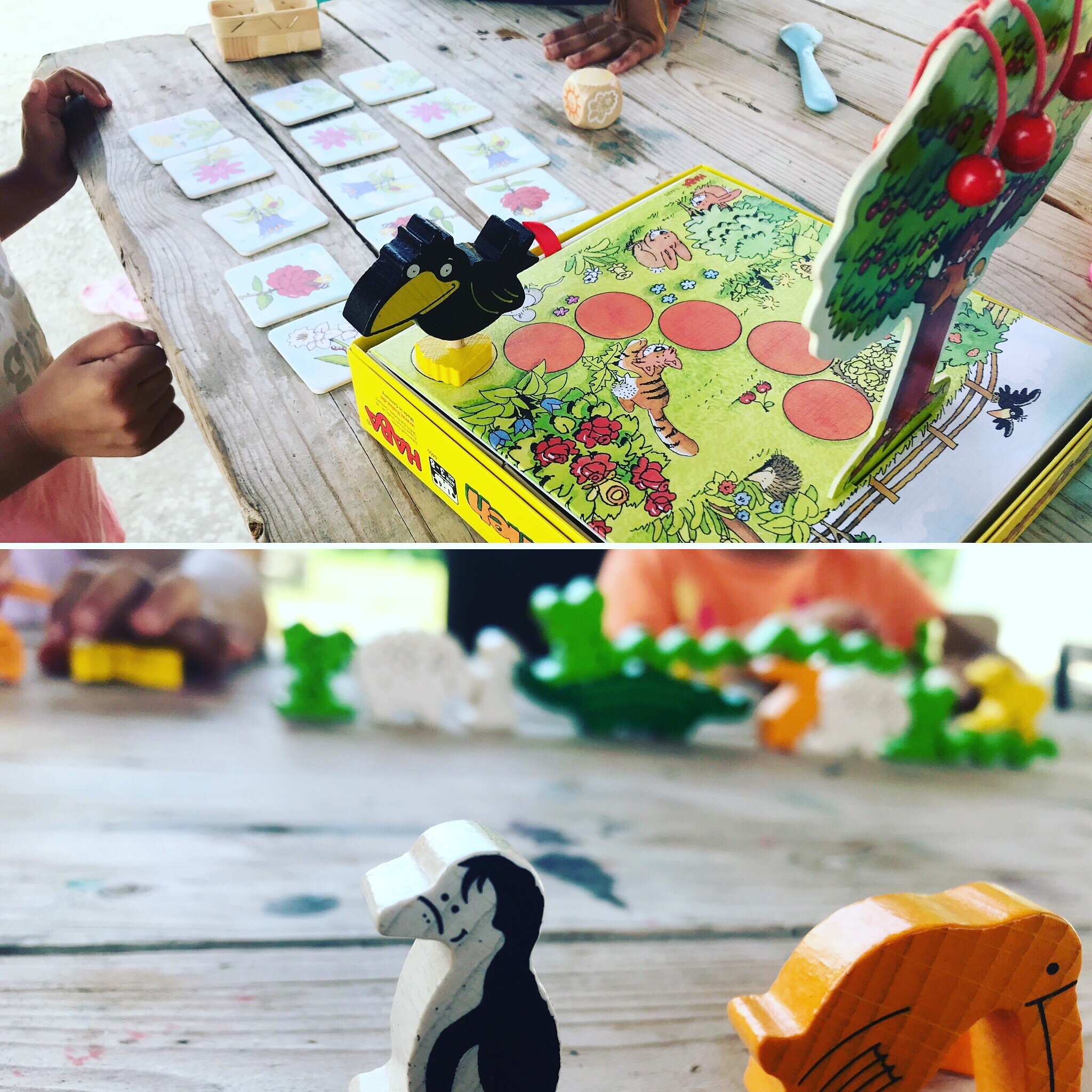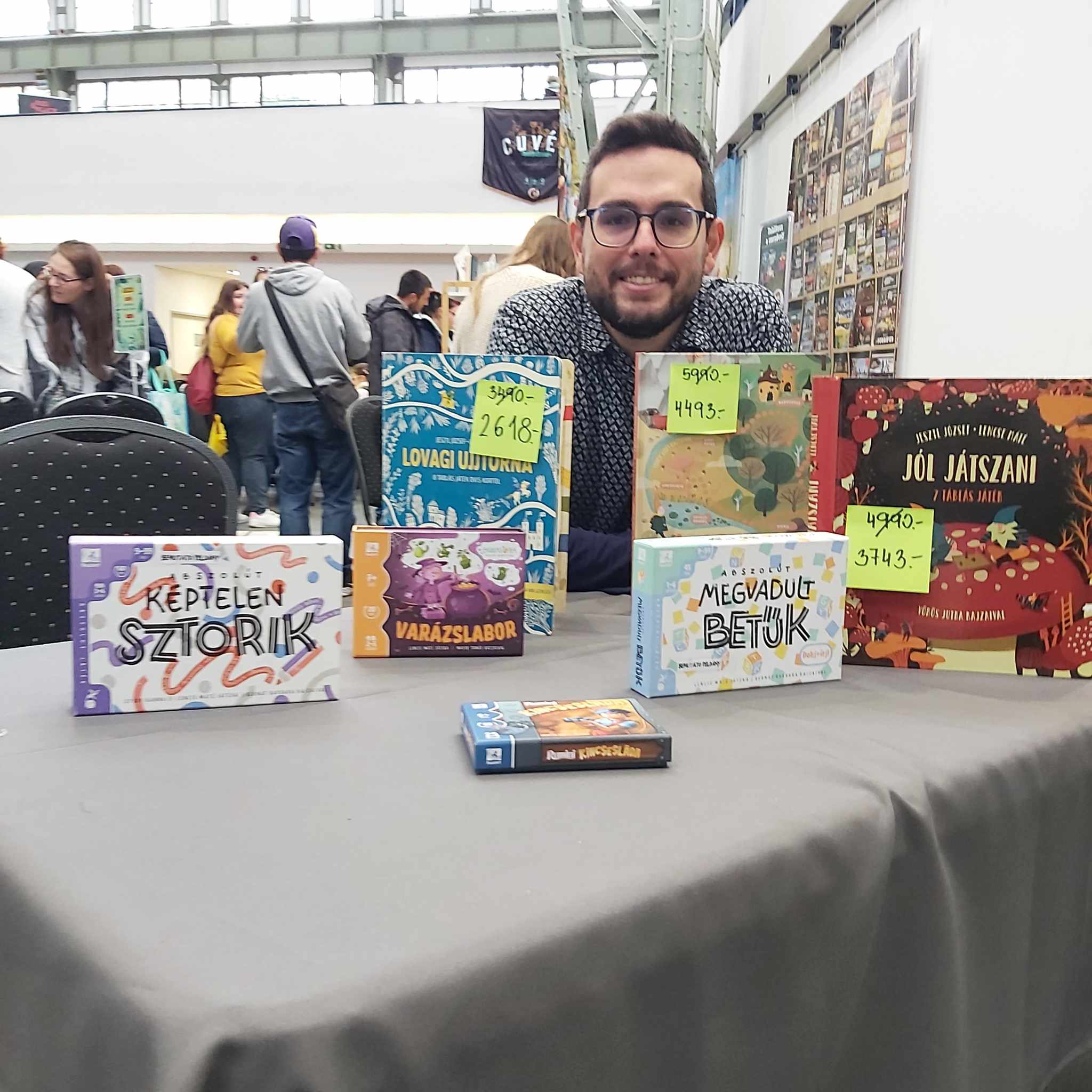Fortunately, many honor me by seeking advice on this topic, so I will attempt to compose a comprehensive post about it, even though I've touched on many aspects elsewhere. How do we start with board games? Which board game is the right choice? From when? Why?
I continue to strive to give everyone a unique answer - because I believe in that -, but perhaps this article will serve as a guideline. I will recommend specific games as well - I don't receive commissions from anywhere, so these are ones we've tried and found effective -, but I'd like to focus on the approach. My experiences are based on two pillars. On one hand, I have a preschool daughter in her senior year, with whom we started board gaming around the age of two. On the other hand, I play a lot with many children's groups, especially at the Toldi Tanoda (A program supporting after-school learning for disadvantaged children near a school in my native Hungary.)
When?
Just like many aspects of children's development, the maturity to engage in board games can emerge at different ages and depends on many factors. In our home, where we have more board games than books and where one parent's job revolves around board games, and adults regularly play board games, there's a high likelihood of this happening early on. Our daughter began showing interest in board games in her second year. She loved looking at them, spreading them out, and has been actively playing since she was about 2 years old. However, this is not a race. For instance, our daughter took a very long time to learn how to slide and to this day, she's not the bravest in the playground or on her training bike. Everyone has their strengths and matures at their own pace in different areas. If a child enjoys puzzles, likes coloring or painting, meaning they can concentrate while sitting at a table for longer periods, you might try introducing board games even before they turn three.
And there are those who, even after that age, find it challenging to play board games by the rules. Obviously, nursery and kindergarten, especially the latter, can help us a lot in this area, but it's good not to rely solely on them. If we'd like our child to play board games, it's beneficial if we play too. It's worth laying the groundwork for board games with quiet activities that require concentration. You have to prepare and set the stage. Think about what topics might interest them. Know your children, understand their abilities and limitations. Familiarize yourself with the world of board games! And once that's all in place, you'll be able to choose the right moment and the right game to introduce the young ones around us to a marvelous world.
(I must mention everywhere and always remind that not everyone likes board games! As parents and educators, we recognize the importance and benefits of board games, which can sometimes lead us to go overboard. Some just don't take to it, and if they're not motivated, it can't be beneficial. Give it a try, be prepared, create the perfect opportunity with a precise game choice, but don't be dismayed if there's no love at first, second, or even multiple sights. It happens. Find what interests them, where they can thrive, and occasionally they might join us for a game.)
With What?
I will describe a few potential starting points. But any other starting point is equally good if it's truly tailored to the individual or individuals. The important thing is to offer games that suit their skills and interests. The goal isn't to impress our child and have them play advanced heavy euro games as soon as possible! Nowadays, there are quite a few good children's games on the market; it's worth looking around.
For us, the first significant board game was "Hopp hopp Häschen". Cute bunnies, an adorable box, and a large dice. The gameplay is simple and purely based on luck. You roll a color with the dice, and if the hole of that color is empty, you place a bunny. If there's already a bunny there, you claim it. You can also roll a bunny directly and immediately claim one. The winner is the one who collects the most bunnies. That's it. For an experienced board gamer, this is simplistic. To a development-focused parent or teacher, it might initially seem insufficient. Yet, this game teaches a lot:
How to roll a dice
- Something happens based on the dice roll which needs interpretation;
- Choose the appropriate action;
- Recognize and match colors;
- Follow turn order;
- Abide by the rules;
- Handle success;
- Deal with failure;
- Compare the number of bunnies collected;
- Estimate the number of bunnies;
- Count the bunnies collected.
And I'm sure I missed something. The game is entertaining, absolutely suitable for 2-3-4-year-olds, and as adults, it's aesthetically pleasing and allows us to laugh at our luck or misfortune. I tend to watch in awe as each child gets more skilled within the game structure.
We loved "Nanu?", which you can recreate at home with bottle caps, stick-on dice, and a few pictures. Here again, the color dice dictates the events, but you can make mistakes because memory is required. However, don't worry because typically young kids have better memory than adults.
We came across "Little Action" a bit late, but it's a marvelous entry game with cute figures and delightful skill tasks. Here you can encounter what a card is, but the primary learning is still that we play together, take turns, and collectively follow the rules. The "Affenbande" is not a complicated game either, where we draw colorful monkeys from a bag and either be happy or not. That's it. But let's play!
On the skill front, the basic game is "Animal Upon Animal" or a cooperative game like one of the versions of "The Little Orchard". And if the kids enjoy coloring, it can even turn into a board game; for example, "Speed Colors" is based on this, and we can rejoice in fine motor development.
And again: there are plenty of other great options beyond these. I like these, and these worked best for us.

How?
The most important thing is to have a concept in our minds. It's genuinely worthwhile to puzzle, memorize, so sit on the floor or at a table and play together; from there, it's not a huge leap to board games. Next, a positive gaming experience is essential, for which choosing a game suitable for age and difficulty is crucial. If the game is based on luck, you don't have to ponder whether to let the child win or not. For everything else, there's the handicap (we wrote about this in our book titled "Playing well") and cooperation. A common question is, in today's world, how can we encourage children to play board games? Personally, I haven't encountered this issue; there's absolutely room for board games alongside gadgets, but I understand that it's a concern for some. One of the primary attractions of board games is the theme, which also strongly resonates with children. For younger ones, board games based on familiar tales can be a good starting point. In Hungary, the Pagony publisher is quite strong in this area. Surely, you also have publishers like this among you.
For me, a significant aspect is to play board games together, being genuinely present. Whether as a parent or as an educator. Be a part of the gaming situation and don't watch TV in the background, don't make phone calls, don't browse the internet. This is also indispensable for a quality gaming experience, helping children immerse themselves in the world of board games.

What's Next?
If the first one, two, or three games work, we're already on our way. But where to? I'd like to recommend some next steps, which for many, when starting with 4-5-6-year-olds, could also serve as their first steps. Here, I continue to recommend games with simple structures. If we're playing regularly, a good direction is to proceed within familiar frameworks.
If you enjoy dexterity and building games, then you're ready for "Rhino Hero". If cooperative games are a hit, "Outfoxed" is a must, leading us into the rich world of detective and deduction games.
I find it intriguing that some classics have junior versions; I've had excellent experiences with "Catan Junior" and "Stone Age Junior".
With kids, simple mechanisms like roll-and-move can go a long way. "Da ist der Wurm drin" was a hit in our house, particularly because of the suspense in not actually seeing, only guessing, our progress. "Veflixxt! kompakt" also stood out, where you don't strictly need to follow age recommendations. Even younger ones can understand the negative cards, and you can help with the counting. We also enjoyed "Grand Prix" from Marbushka, where you don't roll but play cards.
Modern board games' evolution hasn't bypassed card games. It's worth exploring them too, and there's definitely a vast world beyond games like "Old Maid". If I could recommend just one card game, it'd be "Piou Piou", a game we played incessantly everywhere with everyone. It has elements you'll need for more advanced games: a draw deck, hand limit, interactions, and different combinations, while still being playable from ages 4-5. If a child's hand is too small, just turn over a bigger game box and position the cards between the base and the lid for a makeshift card holder.
While a perfect children's game might not exist, "Dragomino" comes close. While every game can have mixed reviews, my experiences with "Dragomino" have consistently been positive, even after playing with dozens of kids and adults. It's a game I highly recommend, making for an excellent conclusion.

And Now?
It would be great if you finally put aside the reading and sat down to play a fun game with some kids. Enjoy yourselves!
